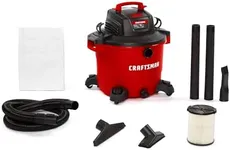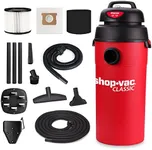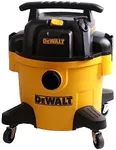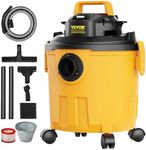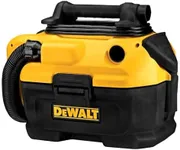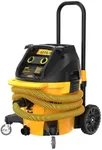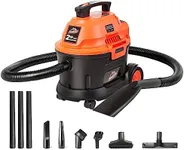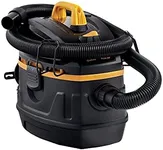Buying Guide for the Best High Suction Shop Vac
Choosing a high-suction shop vac can make cleaning up heavy debris, dust, and liquids much easier, whether you're working in a garage, workshop, or on a job site. The right shop vac for you depends on what you'll be cleaning, how often you'll use it, and where you'll store it. Understanding the key specifications will help you find a model that matches your needs and ensures efficient, hassle-free cleanup.Suction Power (Measured in Peak Horsepower or Air Watts)Suction power tells you how strong the vacuum is at picking up debris and liquids. It's often measured in peak horsepower (HP) or air watts. Higher suction power means the vac can handle heavier materials and larger messes, while lower suction is better for lighter, everyday cleaning. If you plan to clean up sawdust, nails, or water spills, look for higher suction ratings. For lighter tasks like dust or small debris, a moderate suction level will be sufficient. Think about the toughest mess you expect to clean and choose a suction power that can handle it comfortably.
Tank CapacityTank capacity refers to how much debris or liquid the shop vac can hold before you need to empty it. Larger tanks are great for big jobs or infrequent emptying, but they make the vac heavier and bulkier. Smaller tanks are easier to move and store, but you'll need to empty them more often. If you have large areas or heavy-duty tasks, a bigger tank is helpful. For quick cleanups or small spaces, a smaller tank is more convenient.
Filtration SystemThe filtration system determines how well the shop vac traps dust and fine particles. Basic filters are fine for large debris, but if you're dealing with fine dust, allergens, or hazardous materials, look for HEPA or high-efficiency filters. These capture smaller particles and keep the air cleaner. If you have allergies or work with fine dust, prioritize a better filtration system. For general use, a standard filter will do the job.
Hose Diameter and LengthThe hose diameter affects what size debris the vac can pick up, while the length determines how far you can reach without moving the unit. Wider hoses are better for large debris, but can be less flexible. Longer hoses give you more reach, but may reduce suction slightly. If you need to clean large areas or pick up big debris, choose a wider, longer hose. For tight spaces or detailed work, a narrower, shorter hose may be easier to handle.
Portability and WeightPortability and weight affect how easy it is to move the shop vac around your workspace. Heavier, larger models are harder to move but usually have more power and capacity. Lighter, compact models are easier to carry and store, but may not handle big jobs as well. If you need to move the vac frequently or use it in different locations, look for a lighter, more portable design. If it will mostly stay in one place, a heavier model with more features might be better.
Wet/Dry CapabilityWet/dry capability means the shop vac can handle both liquid spills and dry debris. Some models are designed for only dry use, while others can switch between wet and dry modes. If you expect to clean up water, spills, or damp messes, make sure the vac is rated for wet use. For strictly dry messes, a dry-only model will suffice. Consider the types of messes you encounter most often to decide which capability you need.
